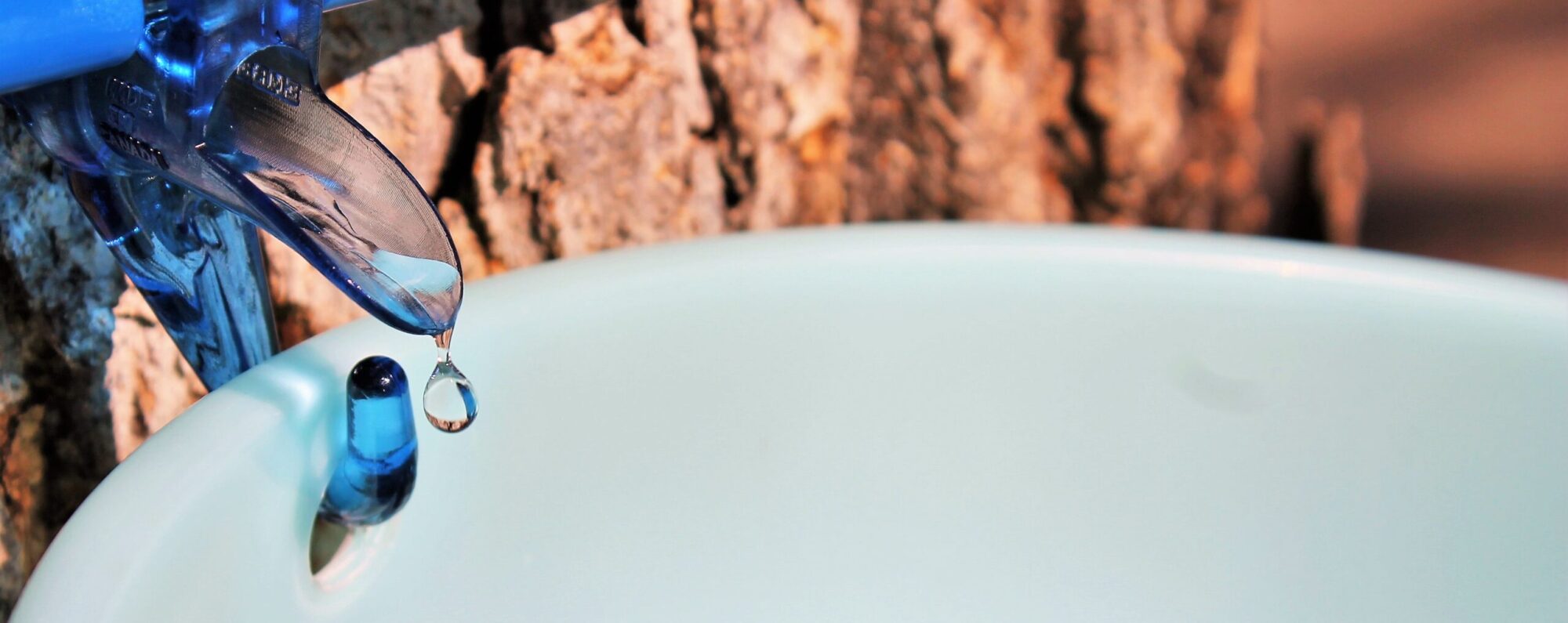A few years ago many areas of the United States saw a very early sap run so some folks started collecting sap in mid-January, At first they had a good run but eventually saw decreased output and some tapholes dried up completely.
It was unusual and so many sugarmakers we’re asking us, we went to the experts at our favorite extension services. Many thanks to University of Vermont, Ohio State University, University of Minnesota, and Cornell University for patiently answering our questions and offering some helpful suggestions. Here’s what they think happened and what you can do to keep on tapping after your lines seem to clog up.
For starters, this all assumes the tree has not budded out – if that’s the case, the season is done because the syrup will taste bad.
Two reasons for an early shutdown of your taps:
No. 1: Your area has stayed above freezing for too long. Without the freeze/thaw cycle, the sap flow stops or is greatly decreased. Freezing is required to produce the negative stem pressure needed to draw more ground moisture into the stem and crown of the tree. If below freezing nights and above freezing days return to your sugarbush, the sap may resume its flow so leave your spiles in and see what happens.
Author’s Note: My own experience bears this out. During that 2017 season in Minnesota we tapped on 2/18 when the 10-day forecast looked sappy. Right away, we had a good sap run but by 2/20 the temperatures were staying in the high 50s and even into the 60s. That’s right, Minnesota in February! I left the spiles in but we had no sap during these warm days. Then more normal weather moved in and about a day afterwards, sap started flowing again. It wasn’t back to the previous amount but it was steady.
No. 2: Your area got really warm (in the 60s or higher) and the sap hole is probably plugged (some call it “dried up” which is not technically accurate). When the temperature is this warm, bacteria grows and thrives in a sugary substance like sap. It will travel into your spile (especially if you’re using a bucket for tapping) get into the tree and plug the xylem vessels. (Imagine large straws extending up and down the tree – this is what you tap into to extract the sap). Don’t worry, this is the natural mechanism through which trees heal themselves. Great for the tree but not so good for the sugarmaker. Once this happens, that taphole is done.
Redrilling it or reaming it out would only further damage the tree so that is not recommended and it would not remove the “plug” that’s above and below the taphole. If you suspect this is the case, leave your spiles in until another freeze/thaw cycle and see if the sap will run. If not, remove them and hope for better weather next season.
One Extension Office pointed out that having snow pack around your tree will help keep the temperature down a bit which will inhibit bacteria growth. They also mentioned that using a closed tapping system such as taps and tubes, shop here gives bacteria less opportunity to enter the system.
Tapping More Holes?
So, if you’ve determined your taphole is a goner, can you drill another hole? This is a maybe and it depends on how many tapholes you already have in that tree (see the chart below) and if you can find a new spot at least 6” away from the existing tapholes. If you can meet the necessary criteria, you can try drilling another taphole but make sure the weather forecast is favorable.
| Taps per Diameter Guide |
| 12”- 18” diameter = 1 tap |
| 18” – 32” diameter = up to 3 taps |
| 32” or more diameter = up to 6 taps |
One interesting suggestion I heard was to tap your trees in sequence to account for weird weather patterns. For instance, if you normally tap 20 trees, tap ten during the first warm spell and tap the remainder during the normal tapping season in March (depending, of course, on the temperature forecast and before the tree has bloomed). This does add more work to the cooking but we have seen that it’s possible to freeze sap without much loss.

